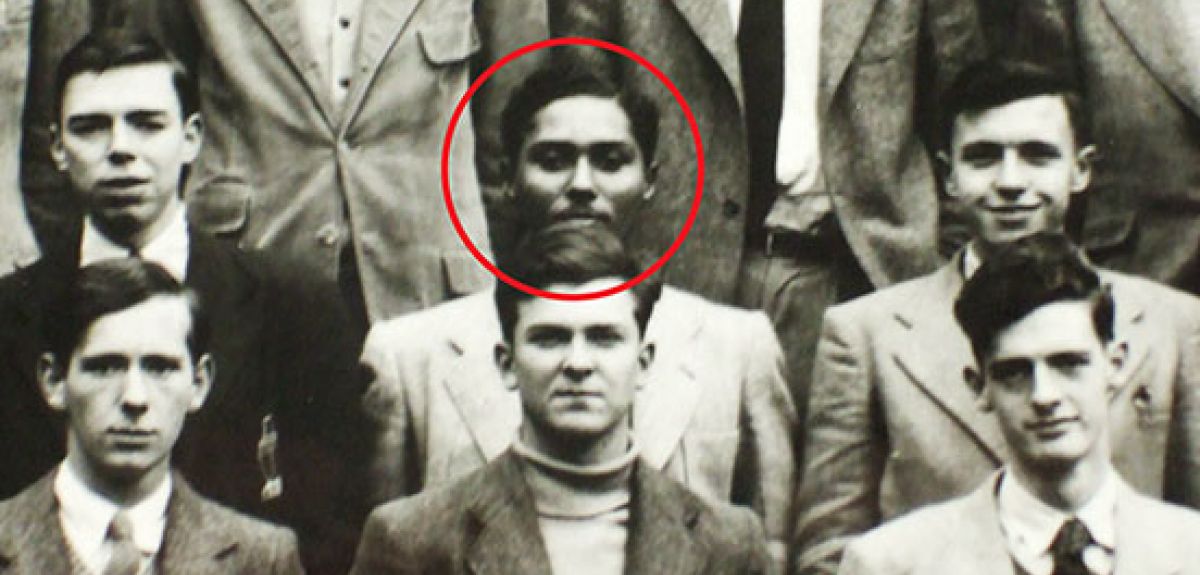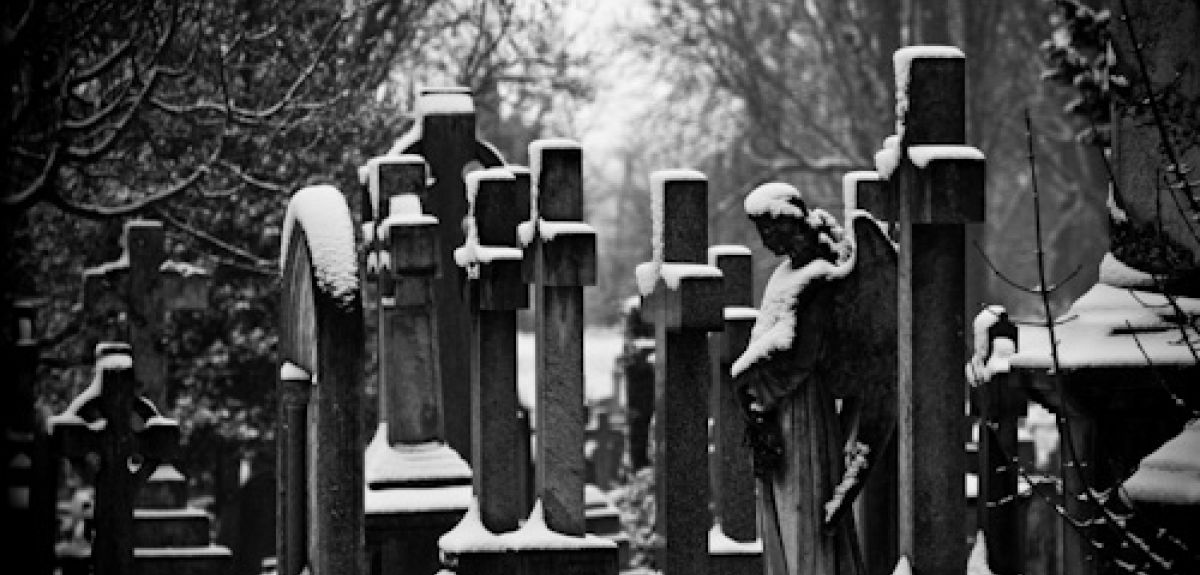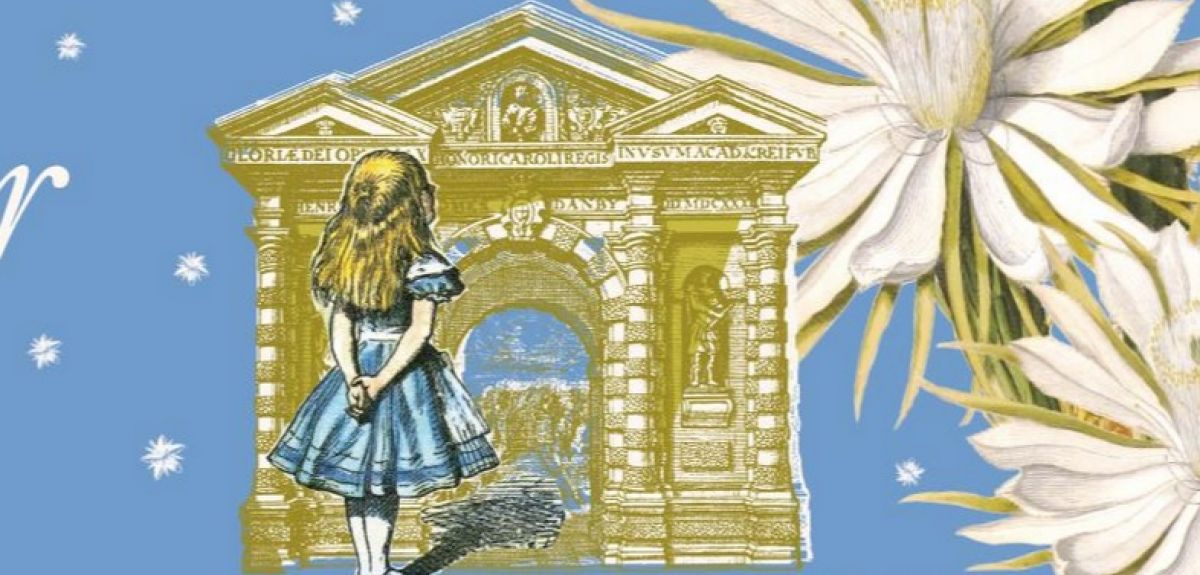Features
Artist Helen Marten, who studied at the Ruskin School of Art and Exeter College from 2005 to 2008, has won this year's Turner Prize.
In her last year at the Ruskin School, in 2008, she was interviewed in a video discussing her studies. That video can be seen here.
Helen spoke about the benefits of studying art in a close-knit group within a wider university. 'It usually works out that you have a few people [within the Ruskin] who become your sounding barriers or the people you talk to most about your work and their work,' she said.
'So you generally find that your critical space is within the school because they are the people who know most of the time exactly what you’re doing, what you’re thinking, what you’re talking about, things you’re looking at.
'But then because you have friends outside the school, there are people you will just chat to and there are lots of tangents which is good.'
Helen said that she benefited from working alongside art students at different stages of their degree.
'I think the vertical relationships are really nice because there’s a real framework,' she said. 'The guy in the year above you knows how to jigsaw something better than you so if you need to learn that, you’ll learn it, and it’s a building up of bits and pieces that eventually give you something a bit more full.
'There is no hierarchy or distinction between a first year and a third year, there’s a real network of friendships and of people’s knowledge that is good.'
She talked about what art students did outside of Oxford's eight-week terms. ‘Quite a few of us from our year all travelled around Germany and Venice this summer seeing various big shows,' she said.
'Maybe something that is symptomatic of really short terms is that there is quite a nice bleed over term times.
'Even though term is finished it’s not like the Ruskin is finished because a lot of people are doing stuff together anyway, like seeing shows in London or going away together.'
The interviewer in the video was Richard Wentworth, who was head of the Ruskin School at the time. His closing comments on Helen and her fellow students now seem prophetic.
'All three of you have worked really hard, you have been incredibly productive and a lot of artists would be put to shame by what you've generated in that time,' he said.
'I've never seen a year be critical like this.'
A new doctoral studentship at Oxford University has been set up in memory of Professor Stuart Hall.
Applications are now open for the DPhil studentship, which will run from 2017-2020 thanks to a collaboration between The Oxford Research Centre in the Humanities (TORCH), Merton College and the Stuart Hall Foundation.
Professor Stuart Hall (1932-2014) was one of the founding figures of British cultural studies, best known for his work around cultural identity, race, and ethnicity, much of which serves as the basis for contemporary cultural studies today.
The successful applicant can come from any humanities discipline with particular research interests in Professor Hall’s areas of expertise.
They will also be part of TORCH’s two-year headline research theme for 2017-18, called Humanities & Identities, which will facilitate opportunities for research on areas that link to diversity and inclusivity.
Professor Hall championed racial and gender equality, and was a catalyst for a number of significant initiatives including journals the New Left Review and Soundings, the Birmingham Centre for Contemporary Cultural Studies, and the Open University.
He was born in Jamaica, and came to Oxford in 1951 to study English as an undergraduate at Merton on a Rhodes Scholarship. Over the course of his career he taught in London, at the University of Birmingham, and at the Open University.
Last month, TORCH and Pembroke College also helped to host the 40th anniversary Callaloo Conference, which is the annual conference of the Journal of African Diaspora Arts and Letters Callaloo.
Professor Elleke Boehmer, Director of TORCH, says: 'For over 55 years, from the time he came to Merton College, Oxford as a Rhodes Scholar from Jamaica, Stuart Hall was one of Britain's leading Black intellectuals, and a pioneer of what we now call cultural studies, who theorized not only questions of Blackness but also Britishness, not only what it was to be an immigrant in these islands, but also what it was to belong.
'The Black Arts journal Callaloo's 40th anniversary conference, which is being hosted by TORCH and Pembroke College this month, will explore Hall's legacy, and impact on debates about race and identity. What excellent timing it then is that Merton College and TORCH are at the same time announcing a new DPhil studentship in Stuart Hall's name.'
More information on the project is available here.
The idea of 'hygge' as cosy domestic bliss has become popular across the world, particular in the winter months. But in a guest post, Daniel M. Grimley, an expert in Scandinavian music at Oxford University, explains that the real meaning of 'hygge' is not quite as simple.
'The evenings lengthen and the air grows chill. Through a window can be glimpsed candles flickering upon an old wooden table, family and close friends gathered round an open fire, gentle conversation or contented quiet, and a feeling of homeliness and security. For a moment, at least, the world seems at peace.
As the winter gloom descends once more, and global events take a dark turn, it is hard to resist such cosy images of domestic well-being: that intimacy and comfort which Scandinavians call ‘hygge’. So pervasive does ‘hygge’ seem, it appears almost impossible to escape the associated allure of woollen jumpers, hot drinks, and artisan linen sheets.
‘Hygge’ has become a marketing tool promoted in glossy magazines and commercials, a designer brand that belongs to an imaginary Scandinavia of elegant furniture, crisp nights, and soft indoor lighting: a land of fairytale and nordic myth.
Far from being simply a global trend, however, ‘hygge’ is a historically contingent term that has baleful consequences for our contemporary predicament. Defining precisely what ‘hygge’ means, for non-Scandinavians, proves frustrating. Even its pronunciation remains a challenge. In Danish, it is spoken softly, and consists of two syllables: the final vowel is only lightly stressed, whereas the first is closer to a French ‘y’ than the Anglo-German ‘u’.
The word is a noun: the adjectival form is ‘hyggelig’. It shares the same etymology as the English ‘hug’, from the old Icelandic ‘hugga’, meaning to embrace or to soothe: it is intimately linked, in other words, with the body and with domestic space as a protective (and protected) realm.
In its more contemporary usage, ‘hygge’ emerges in nineteenth-century Danish literature as part of a more integrated sense of community and belonging (‘samfund’ or ‘fælleskab’), especially following the Prussian-Danish wars in 1848 and 1864. This shift of emphasis is consonant with the reformist philosophy of thinkers and theologians such as Nikolai Grundtvig, and also with Scandinavia’s increasing awareness of its geopolitical position: a largely agrarian society that had come relatively late to industrialization, and which found itself on the edge of more belligerent imperializing powers.
In our own post-industrial condition, such inward domesticity has begun to appear especially attractive, and assumed an increasingly nostalgic character. Its legacy is still felt in Nordic architecture and design, which largely eschews the monumental in favour of a more human sense of size and shape.
It has similarly helped to sustain the much-admired Scandinavian welfare model, with its principles of openness, equality, and humanitarianism. Through this doctrine of care and support that the idea of ‘hygge’ so powerfully embodies, Scandinavia has been a global beacon, a focus for the homely celebration of fellowship and shared responsibility upon which the world increasingly depends.
The sense of community upon which ‘hygge’ has relied, however, has not always seemed so passively benign. As Paul Binding’s brilliant recent biography has shown, many of H. C. Andersen’s short stories, paradigmatically ‘The Little Match Girl’ (‘Den lille pige med svovlstikkerne’), sharply juxtapose evocations of cosiness and intimacy alongside astonishing emotional cruelty and psychological pain.
Generations of artists and writers, including Henrik Ibsen, Edvard Munch, Selma Lagerlöf, and August Strindberg, railed against the suffocating effect of the social conformism and complacency that dominated nineteenth-century nordic society, and sought refuge or relief in biting satire and opaque symbolism.
There is little sense of ‘hygge’, for example, in the chilly paintings of Vilhelm Hammershøi or the ‘blue’ interiors of Harriet Backer, or in the fiery social critique of authors such as Martin Anders Nexø. The great Danish composer Carl Nielsen, whose songs are still sung daily by children across Denmark, once described himself as ‘a bone of contention, because I wanted to protest against all this soft Danish smoothing-over, I wanted stronger rhythms, more advanced harmony’. A less ‘hyggelige’ artistic manifesto is difficult to conceive.
Here, then, lies a more complex and critical engagement with ‘hygge’: in the recognition that its warming embrace, and the idealized domestic cosiness with which it is intertwined, can swiftly become stifling and claustrophobic. The enclosure that is so central to the feeling of being hyggelig can unexpectedly have the opposite effect, shutting out the world and excluding people more rapidly than it gathers them together.
This is a more telling indictment of contemporary Scandinavia, as it struggles to address global crises that are beyond its control. The impression of protected domestic space, and of turning inwards, can lead to hardened physical boundaries and political borders, especially if that space appears compromised or threatened.
Within this notion of ‘hygge’, as it has been popularized and disseminated, must also lie the waves of xenophobia and violence, and the rise of the far-right, that have increasingly fractured the Scandinavian political landscape, and which have stretched nordic notions of tolerance and open-mindedness almost to breaking point.
Perhaps, then, a new kind of ‘hygge’ is required, one less tied to complacent notions of lifestyle and material comfort. Its proper meaning and value lie not in elegant furniture, soft candlelight, and high-end designer knitwear, but in the need to extend human warmth and responsibility.
Those friends and family who should be drawn close are not those to whom we are most closely related, but rather those from whom we feel most different and remote. This is a different kind of domesticity, and a different sense of homeliness. As winter deepens, and the darkness grows once more, reaching out becomes increasingly imperative.
It is only then that such images of comfort and security can genuinely regain their glow, and that Scandinavia can begin to feel ‘hyggelig’ once more.'
Men in the 17th century believed they were outnumbered by women despite a lack of evidence for this claim, new research has revealed.
Dr Margaret Pelling, a historian at Oxford University, looked at books, pamphlets and religious tracts from the period for a study which has now been published in The Historical Journal.
She found numerous references by male writers to being outnumbered by women, but no statistical evidence to support this view.
In fact, a contemporary survey of mortality records in London by John Graunt showed that, in the capital, slightly more men than women were born during the period so the balance between men and women would have been roughly equal.
'It seems to have been taken for granted that there were more women than men in 17th century England, yet one of very few population surveys of the time suggests this was not the case,' says Dr Pelling.
She says there was a misogynistic undertone to these numerical claims.
'Early modern men were most likely to make numerical claims about women where there were too many of a 'problematic' kind,' she says. 'Women were expected to be silent, chaste and more or less confined to the household, their identity submerged in that of a husband, father or master.
'Independent women were particularly objectionable, especially if they banded together in shows of female solidarity for political or religious reasons.'
So even when John Graunt's findings were published, some men continued to believe that they were being overwhelmed by women.
'It is a matter of everyday experience that statistics, among other facts, are ignored if this suits the argument,' says Dr Pelling.
Other reasons for this belief include the Civil Wars which led to many male deaths and others leaving the country, and a lack of numeracy at the time.
Dr Pelling says that during the early modern period, most Englishmen were in favour of an overall rise in the population.
'They saw increased population as an important indicator of national success, and a shrinking population as a warning of decline, especially in comparison with other countries,' she says.
'But in spite of this, people in England continued to be reluctant to try to count its population.'
The full article can be found here.
Oxford University’s Botanic Garden will hold its first ever Christmas Fair this weekend.
The Oxford Botanic Garden will install a heated marquee with a special Christmassy atmosphere inside. There will be music from the ‘Horns of Plenty’ and a brass band on Saturday and bongo drummers on both Saturday and Sunday.
On the menu will be mulled wine, cider, beer, coffee and hot chocolate; homemade mince pies and other seasonal sweets; and a wide range of stalls selling high-quality gifts.
Visitors can also stroll around parts of Britain’s oldest Botanic Garden during the Fair. Highlights of the Garden include magnificent trees and medicinal plants, and a sculpture of the Cheshire Cat from Alice in Wonderland sitting in an ancient Mulberry tree.
‘The idea behind the Christmas Fair is to encourage people to visit who have never been to the Garden before,’ says Professor Simon Hiscock, Director of the Oxford Botanic Garden.
‘Many people do not even know we have a botanic garden here in the centre of Oxford.
‘So by holding events like this, and offering local businesses the chance to hire the Garden for evening events, we hope to bring ourselves closer to the community.’
The Christmas Fair will run from 10am to 8pm on Saturday 3 December, and 10am to 4pm on Sunday 4 December. Admission is £5 for adults, £3.50 for concessions, and free for accompanied children under 16.
The Garden will celebrate its 400th anniversary in 2021, and in the build-up to the anniversary it is highlighting one plant of scientific or cultural significance a week for 400 weeks.
More information on the Plants 400 project can be found here.
- ‹ previous
- 104 of 247
- next ›





 World Malaria Day 2024: an interview with Professor Philippe Guerin
World Malaria Day 2024: an interview with Professor Philippe Guerin From health policies to clinical practice, research on mental and brain health influences many areas of public life
From health policies to clinical practice, research on mental and brain health influences many areas of public life From research to action: How the Young Lives project is helping to protect girls from child marriage
From research to action: How the Young Lives project is helping to protect girls from child marriage  Can we truly align AI with human values? - Q&A with Brian Christian
Can we truly align AI with human values? - Q&A with Brian Christian  Entering the quantum era
Entering the quantum era Can AI be a force for inclusion?
Can AI be a force for inclusion? AI, automation in the home and its impact on women
AI, automation in the home and its impact on women Inside an Oxford tutorial at the Museum of Natural History
Inside an Oxford tutorial at the Museum of Natural History  Oxford spinout Brainomix is revolutionising stroke care through AI
Oxford spinout Brainomix is revolutionising stroke care through AI Oxford’s first Astrophoria Foundation Year students share their experiences
Oxford’s first Astrophoria Foundation Year students share their experiences